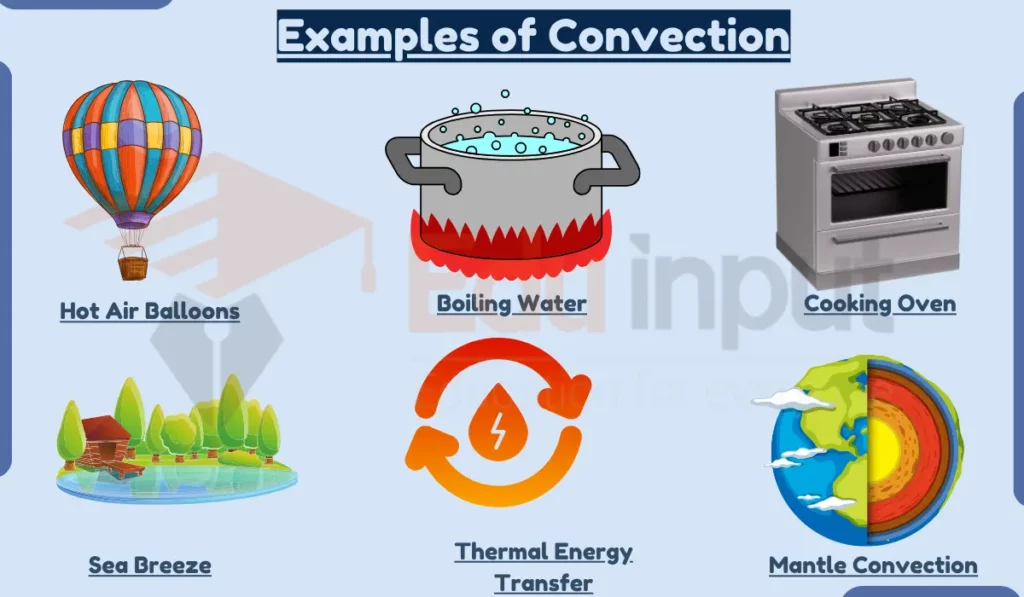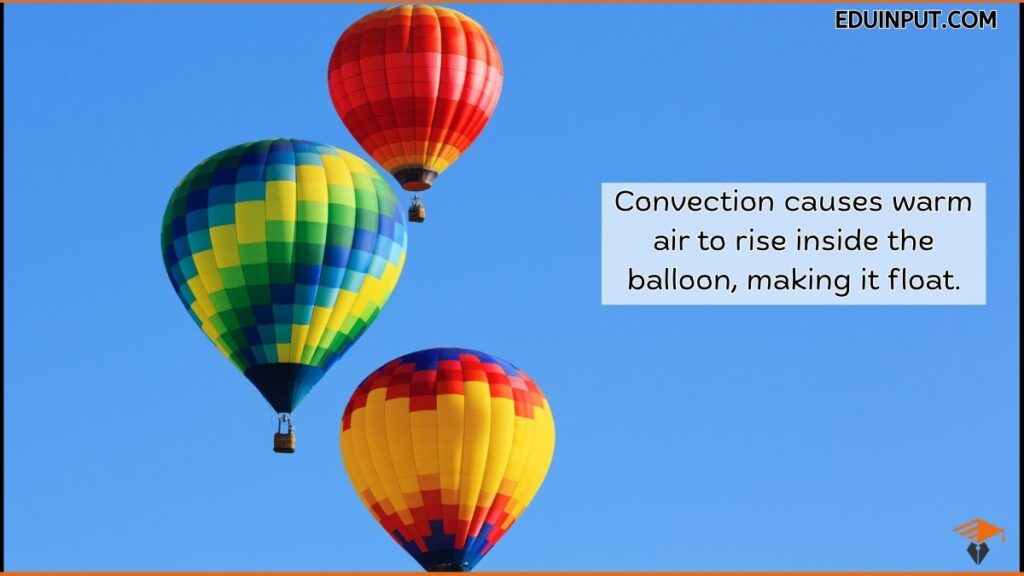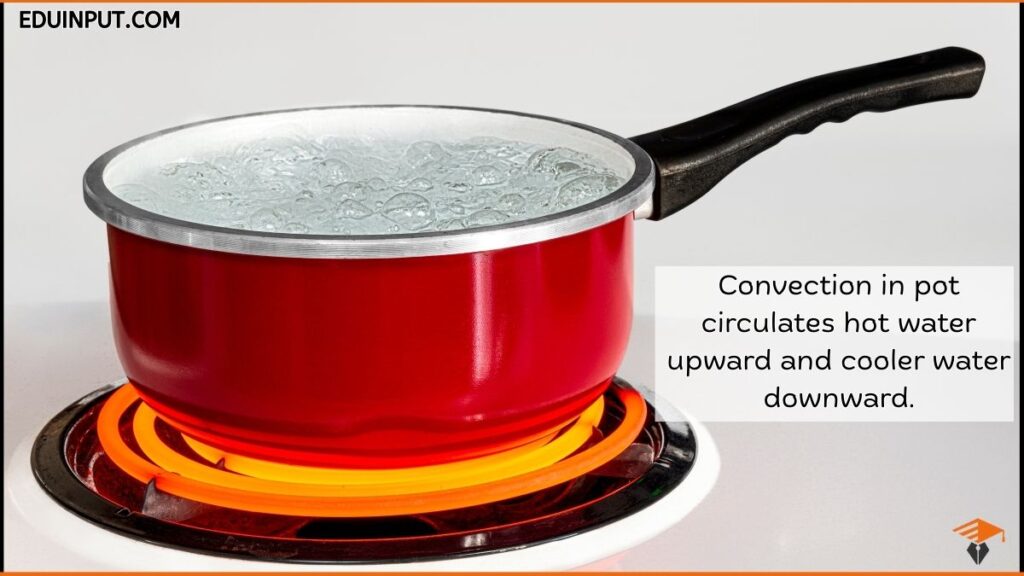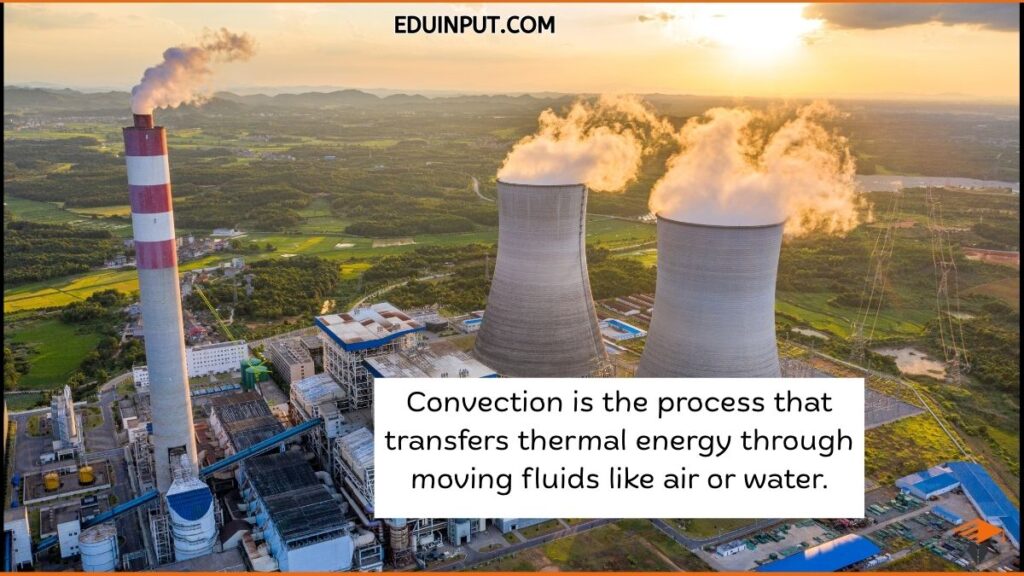Examples of Convection
A classic convection example is boiling water—heat from the bottom causes water to rise while cooler water sinks, creating a circular motion. Other common examples of convection include warm air rising and cool air sinking in the atmosphere, leading to wind and weather patterns. In homes, heaters warm the air near them, which rises and circulates.
These are great convection examples in real life. You can also spot convection examples at home, like the airflow in an oven or a room heated by a radiator. On the other hand, conduction is the direct transfer of heat through a solid object.
Simple conduction examples include a metal spoon getting hot in a cup of tea or your hand warming up when you touch a warm mug. Understanding these examples helps explain how heat energy flows through different materials and spaces in our everyday lives.

Examples of Convection
Here are the 10 examples of convection:
1. Hot Air Balloons
Hot air balloons are a classic convection example. As the air inside the balloon is heated, it becomes less dense and rises above the cooler, denser air outside, creating lift through thermal convection. This creates a convection current. As the air in the balloon cools, the pilot must reheat it to maintain flight. This upward movement is a perfect example of convection in real life.

2. Boiling Water
When water boils, convection currents form. Boiling Water is one of the simplest and most visible convection examples in daily life. When water boils, convection currents bring hot water from the bottom of the pot up to the surface as it heats up.
The hot water has lower density than the cooler water, so it rises while the cooler, denser water sinks. This circulation distributes the heat from the stove evenly through the pot through continuous convection loops. Without convection, the water at the bottom would overheat.

3. Heating Water in a Kettle
A kettle also demonstrates convection. As the water heats, the hot water rises. Cooler water sinks to replace it. This creates convection currents that ensure even heating throughout the liquid. It’s a great example of convection heat transfer.
4. Sea Breeze
A sea breeze is a natural convection phenomenon. During the day, land heats up faster than the ocean. The warm air over the land becomes less dense and rises. Cooler air from the sea moves inland to replace it. This creates a convection current, providing a cool breeze at the coast. This is a typical natural convection example.

5. Thermal Energy Transfer
Convection plays a key role in thermal energy transfer. When a fluid is heated, the hotter molecules rise, and cooler molecules sink. This motion sets up convection cells and currents. It’s a continuous loop that efficiently transports heat. This is a basic thermal convection example.

6. Mantle Convection
In the Earth’s mantle, convection occurs on a massive scale. Hot material from the Earth’s core rises toward the surface. Cooler material sinks back down. This creates a convection current that drives tectonic plate movements. Mantle convection is an essential convection example that impacts Earth’s geology.

7. Weather Systems
On a global scale, convection in the atmosphere drives weather systems. Warm air rises, and cooler air sinks, creating a circulation of air and water masses. This movement influences weather patterns. Convection examples in science help explain storms, precipitation, and winds.
8. Pipe Heating Systems
Hot water or steam heating pipes in homes rely on convection. As hot water rises, cooler water sinks to replace it. This continuous circulation of water transfers heat throughout the system. It’s an excellent example of convection at home that helps warm a room.
9. Cooking with Convection Ovens
Convection ovens use fans to circulate hot air around the food. The fan helps distribute the heat more evenly. As hot air moves around the food, it cooks faster. This is an example of forced convection. The convection currents ensure that the food is evenly heated, improving cooking efficiency.

10. Cloud Formation
Clouds form due to convection. Warm air containing moisture rises from the Earth’s surface. As the air cools, the moisture condenses into droplets. This creates visible clouds. This is a convection example in daily life, driven by changes in temperature and density.







Leave a Reply